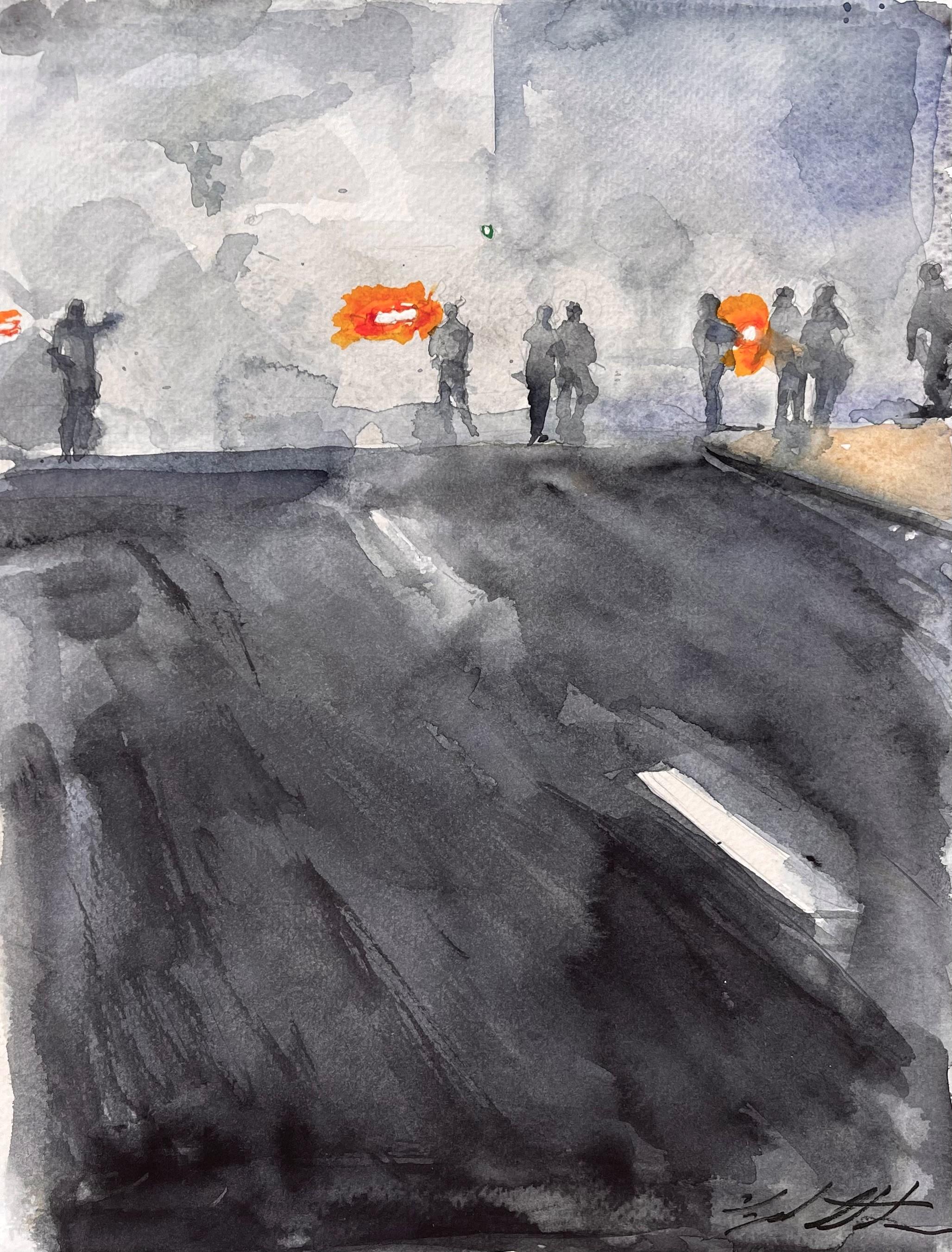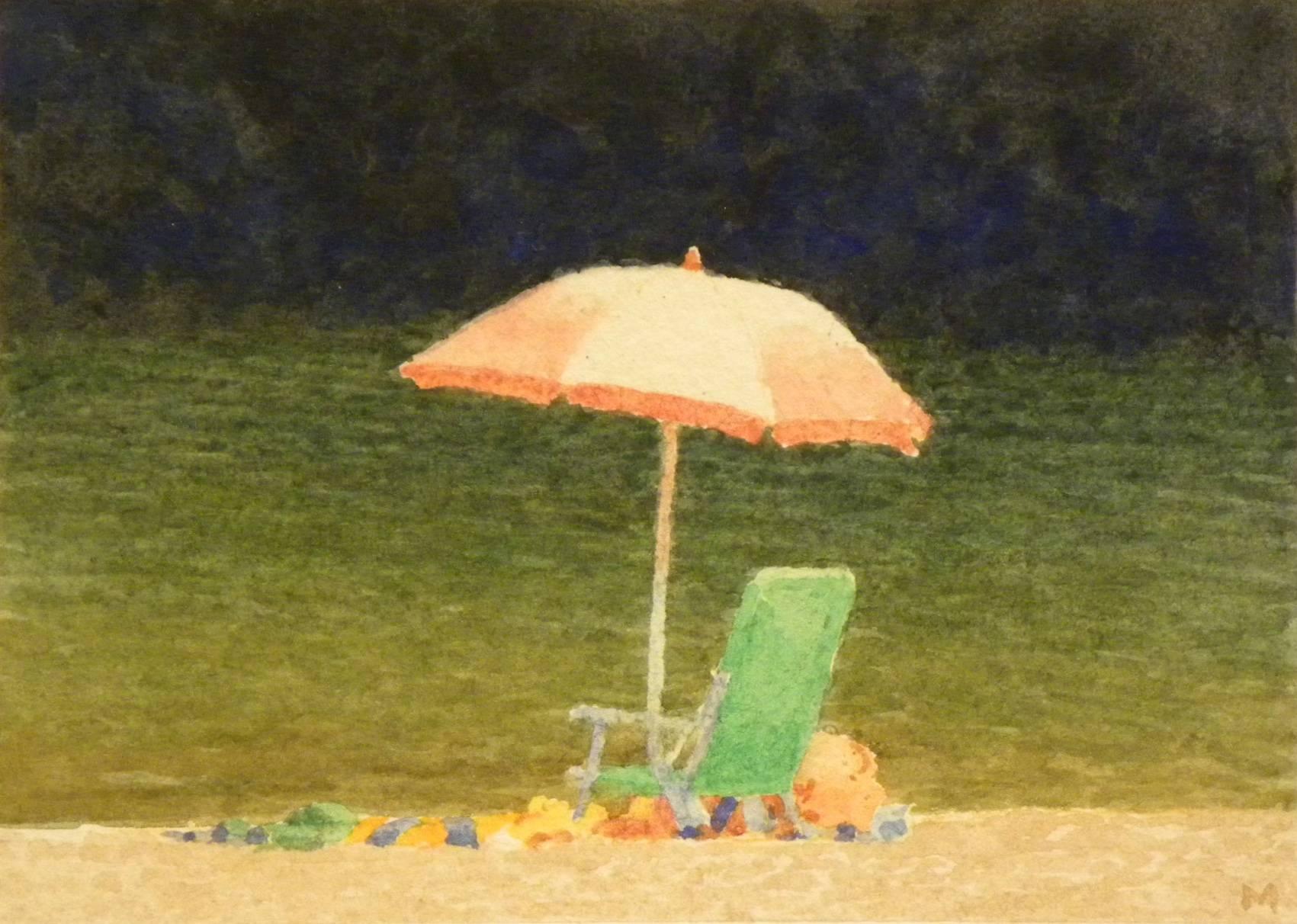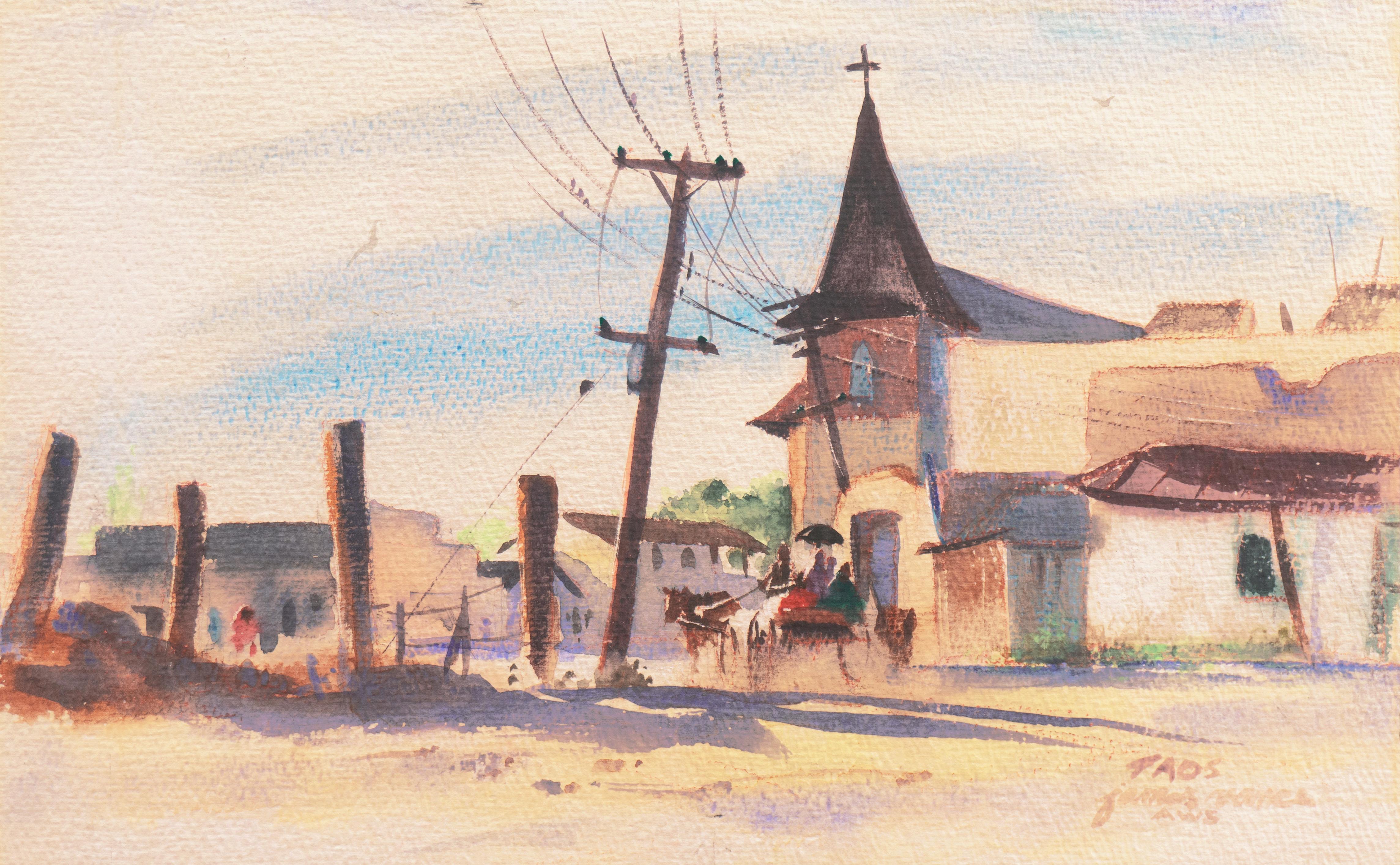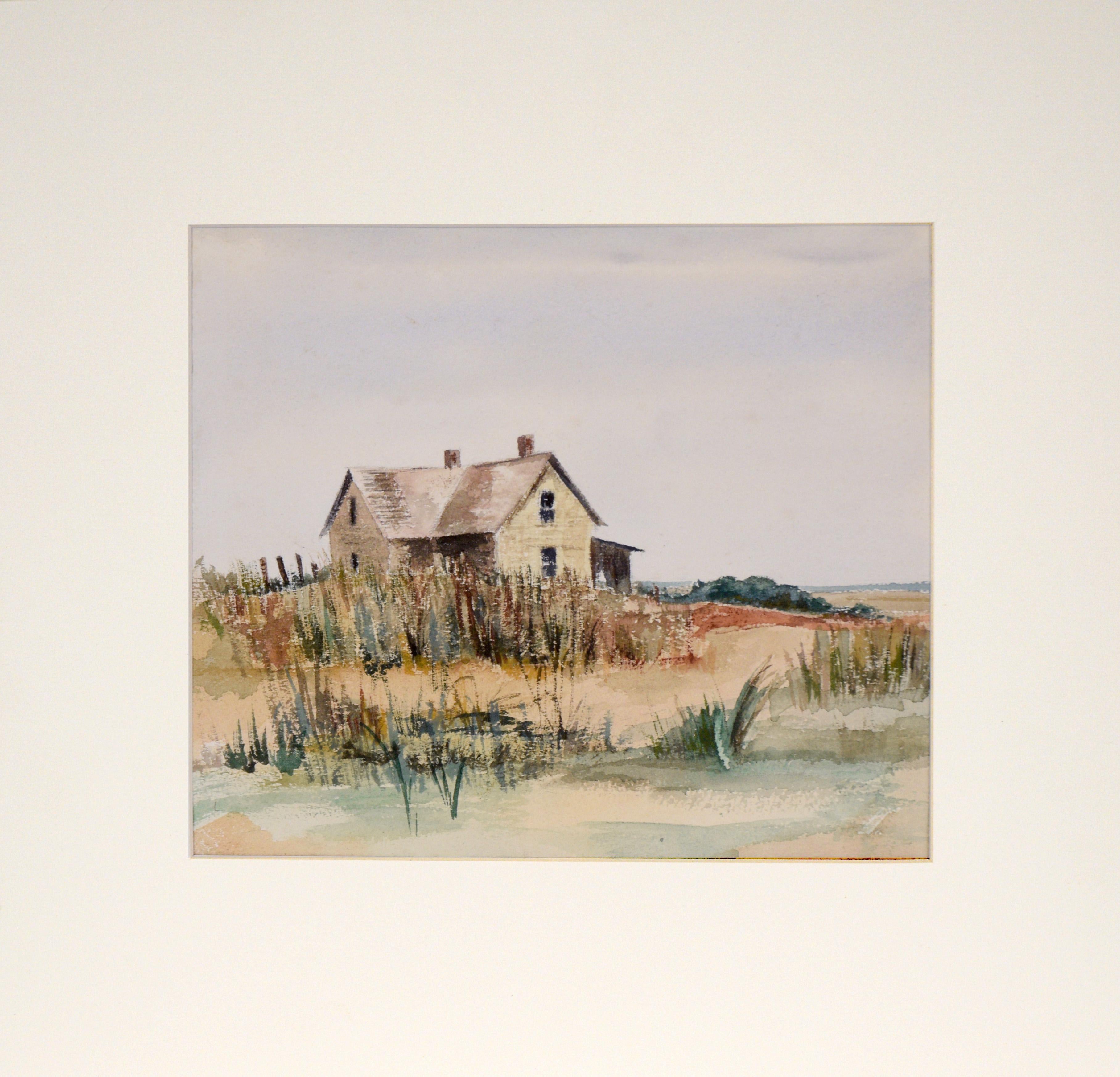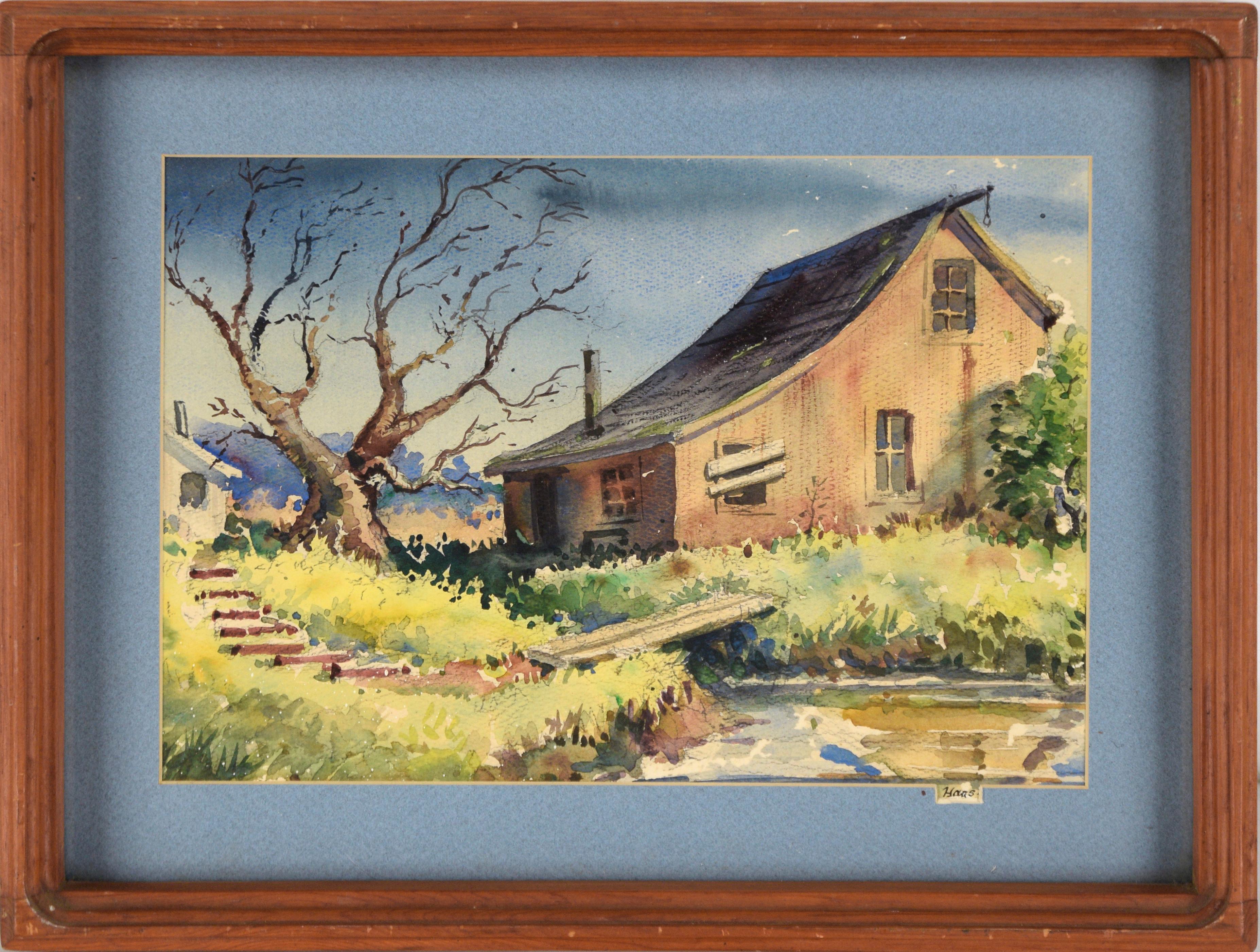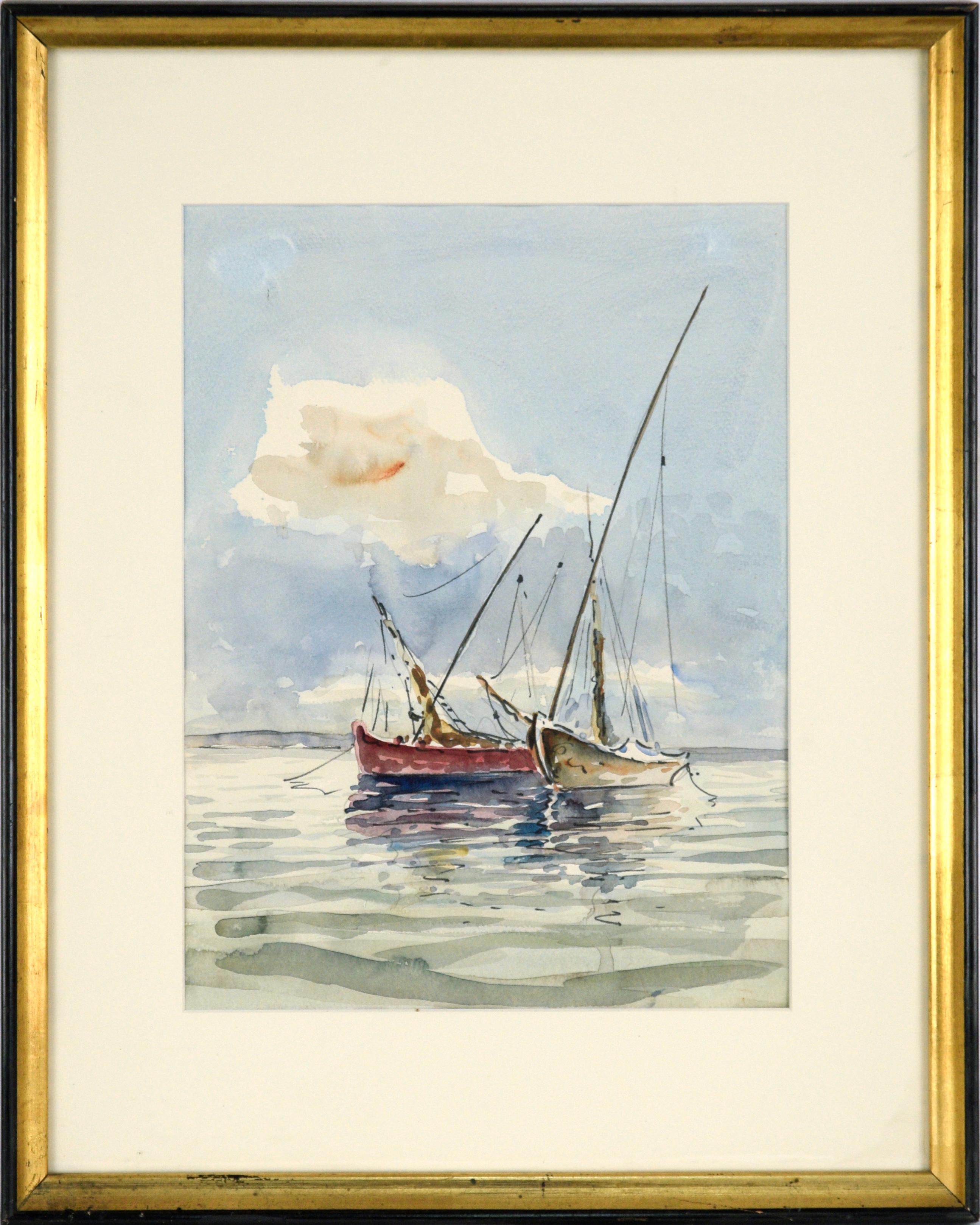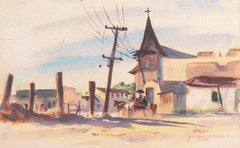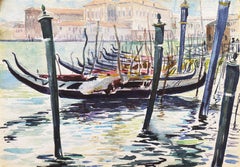
'View of Venice', NWS, PAFA, Art Institute Chicago, Ohio University
View Similar Items
Want more images or videos?
Request additional images or videos from the seller
1 of 13
Ralph Fanning'View of Venice', NWS, PAFA, Art Institute Chicago, Ohio UniversityCirca 1929
Circa 1929
About the Item
- Creator:Ralph Fanning (1889 - 1971)
- Creation Year:Circa 1929
- Dimensions:Height: 9.88 in (25.1 cm)Width: 13.88 in (35.26 cm)
- Medium:
- Movement & Style:
- Period:
- Condition:toning, minor edge-rubbing, minor corner bumping; unframed. shows well.
- Gallery Location:Santa Cruz, CA
- Reference Number:1stDibs: LU3444875951
About the Seller
5.0
Platinum Seller
These expertly vetted sellers are 1stDibs' most experienced sellers and are rated highest by our customers.
Established in 1982
1stDibs seller since 2013
625 sales on 1stDibs
More From This SellerView All
- 'Torrey Pines Beach, San Diego', Carmel Art Association, Monterey Museum of ArtBy Edwin AdamsonLocated in Santa Cruz, CAA view of the famous San Diego state park beach, shown at sunset with figures walking on the shore. Signed lower right, 'Edwin Adamson', titled verso, 'Torrey Pines Beach' and painted circa 1965. An alumnus of Hamlin University and the University of Minnesota, Adamson maintained his interest as an amateur watercolorist while pursuing a military career. Retiring with honors in 1978, he expanded his interest in painting and was elected a member of the Carmel Art...Category
1960s American Impressionist Landscape Drawings and Watercolors
MaterialsWatercolor, Paper
- 'Taos', American Watercolor Society, Chouinard, New York, Art Student's LeagueLocated in Santa Cruz, CASigned lower right, 'James Vance, AWS', (American, 1919-2007), titled 'Taos' and painted circa 1950. James Vance grew up in Los Angeles and first applied ...Category
1950s American Impressionist Landscape Drawings and Watercolors
MaterialsGouache, Paper, Watercolor
- 'Moss Beach, Monterey, California', Pacific Coastal Landscape, ASL NYC, BenezitBy Elmer WachtelLocated in Santa Cruz, CAAn early-20th-century, landscape showing a view of the coastline at Moss Beach in Monterey County with slate-blue skies overhead and a view towards a stand ...Category
Early 1900s American Impressionist Landscape Drawings and Watercolors
MaterialsGouache, Watercolor, Paper
- 'Santa Barbara Landscape', Paris, Académie Julian, LACMA, Pasadena, CaliforniaLocated in Santa Cruz, CASigned lower left, 'J. W. Nicoll' for John W. Nicoll (American, 1865-1943), titled lower left, 'Santa Barbara' and painted circa 1925. Sheet dimensions: 9 x 12.75 inches. A luminous, early twentieth-century landscape showing a picturesque view of a Spanish style cottage set in a lush garden with a view beyond towards the Santa Ynez Mountains rising towards clouded, blue skies. An unusual and elegant view of old-time Santa Barbara that retains much of its crispness and freshness of color. Born in New York, John Nicoll first studied with his uncle, the landscape painter, James Nicoll. He subsequently moved to Paris where he furthered his education for three years under Bouguereau and Ferrier at the Académie Julian. He then continued on to Seville where he studied for three years at the Academia Real, spending his winters traveling and painting in North Africa. By 1899, Nicoll had settled in Pasadena where he painted, exhibited and taught drawing at the College of Fine Arts from 1906-1935. Upon his retirement, he moved to San Diego where he continued to paint and exhibit until his death in 1943. Over the course of a long career, James Nicoll exhibited widely and with success including at the Stickley Building, Pasadena, 1899; Blanchard Hall, Los Angeles, 1899; the Louisiana Purchase Exposition, St Louis, 1904; the Ruskin Art Club, Los Angeles, 1904; Lewis & Clark Expo Portland, 1905 (Bronze Medal); the Painters Club, Los Angeles, 1906-09; the Nicholson Gallery...Category
1920s American Impressionist Landscape Drawings and Watercolors
MaterialsPaper, Watercolor
- 'Alpine Landscape in Piedmont', Munich School ProfessorLocated in Santa Cruz, CASigned lower left, 'Hans Blum' (German, 1858-1942) and painted circa 1911. Provenance: Exhibited, 'Jubiläums- Ausstellung der Münchener Künstler-Genossenschaft', München 1911 ('Anniversary Exhibition of the Munich Artists' Cooperative'). Label verso. Hans Blum studied at the Munich Academy of Fine Arts with Ludwig von Löfftz and Ludwig Lindenschmit the Younger. He first worked as a portraitist in Nuremberg but later turned to genre painting, which he often carried out in the style of plein-air painting. Blum exhibited his Italian alpine...Category
1910s Impressionist Landscape Drawings and Watercolors
MaterialsPaper, Watercolor, Gouache, Illustration Board
- 'Menton, France', École des Beaux-Arts, student of Gustave Boulanger and GeromeBy Auguste François GorguetLocated in Santa Cruz, CASigned lower left, 'A.F. Gorguet' for Auguste François Gorguet (French, 1862-1927), titled 'Menton' and dated with roman numerals 'XI' for 1911; bearing old 'P. Navez' exhibition lab...Category
1910s Impressionist Landscape Drawings and Watercolors
MaterialsBoard, Gouache, Watercolor, Paper
You May Also Like
- The Rapids (Maine)By John WhorfLocated in Provincetown, MAJohn Whorf, born in 1903, was a talented, opinionated artist who achieved great success at a young age. Encouraged by his artistic father, Whorf studied briefly during his early te...Category
Early 20th Century American Impressionist Landscape Drawings and Waterco...
MaterialsPaper, Watercolor
- "Untitled 1, " Watercolor PaintingLocated in Denver, COClyde Steadman's "Untitled 1" is an original, handmade watercolor painting that depicts an urban landscape with human silhouettes.Category
2010s American Impressionist Figurative Drawings and Watercolors
MaterialsPaper, Watercolor
- "Train Station, " Max Kuehne, Industrial City Scene, American ImpressionismBy Max KuehneLocated in New York, NYMax Kuehne (1880 - 1968) Train Station, circa 1910 Watercolor on paper 8 1/4 x 10 1/4 inches Signed lower right Provenance: Private Collection, Illinois Max Kuehne was born in Halle, Germany on November 7, 1880. During his adolescence the family immigrated to America and settled in Flushing, New York. As a young man, Max was active in rowing events, bicycle racing, swimming and sailing. After experimenting with various occupations, Kuehne decided to study art, which led him to William Merritt Chase's famous school in New York; he was trained by Chase himself, then by Kenneth Hayes Miller. Chase was at the peak of his career, and his portraits were especially in demand. Kuehne would have profited from Chase's invaluable lessons in technique, as well as his inspirational personality. Miller, only four years older than Kuehne, was another of the many artists to benefit from Chase's teachings. Even though Miller still would have been under the spell of Chase upon Kuehne's arrival, he was already experimenting with an aestheticism that went beyond Chase's realism and virtuosity of the brush. Later Miller developed a style dependent upon volumetric figures that recall Italian Renaissance prototypes. Kuehne moved from Miller to Robert Henri in 1909. Rockwell Kent, who also studied under Chase, Miller, and Henri, expressed what he felt were their respective contributions: "As Chase had taught us to use our eyes, and Henri to enlist our hearts, Miller called on us to use our heads." (Rockwell Kent, It's Me O Lord: The Autobiography of Rockwell Kent. New York: Dodd, Mead and Co., 1955, p. 83). Henri prompted Kuehne to search out the unvarnished realities of urban living; a notable portion of Henri's stylistic formula was incorporated into his work. Having received such a thorough foundation in art, Kuehne spent a year in Europe's major art museums to study techniques of the old masters. His son Richard named Ernest Lawson as one of Max Kuehne's European traveling companions. In 1911 Kuehne moved to New York where he maintained a studio and painted everyday scenes around him, using the rather Manet-like, dark palette of Henri. A trip to Gloucester during the following summer engendered a brighter palette. In the words of Gallatin (1924, p. 60), during that summer Kuehne "executed some of his most successful pictures, paintings full of sunlight . . . revealing the fact that he was becoming a colorist of considerable distinction." Kuehne was away in England the year of the Armory Show (1913), where he worked on powerful, painterly seascapes on the rocky shores of Cornwall. Possibly inspired by Henri - who had discovered Madrid in 1900 then took classes there in 1906, 1908 and 1912 - Kuehne visited Spain in 1914; in all, he would spend three years there, maintaining a studio in Granada. He developed his own impressionism and a greater simplicity while in Spain, under the influence of the brilliant Mediterranean light. George Bellows convinced Kuehne to spend the summer of 1919 in Rockport, Maine (near Camden). The influence of Bellows was more than casual; he would have intensified Kuehne's commitment to paint life "in the raw" around him. After another brief trip to Spain in 1920, Kuehne went to the other Rockport (Cape Ann, Massachusetts) where he was accepted as a member of the vigorous art colony, spearheaded by Aldro T. Hibbard. Rockport's picturesque ambiance fulfilled the needs of an artist-sailor: as a writer in the Gloucester Daily Times explained, "Max Kuehne came to Rockport to paint, but he stayed to sail." The 1920s was a boom decade for Cape Ann, as it was for the rest of the nation. Kuehne's studio in Rockport was formerly occupied by Jonas Lie. Kuehne spent the summer of 1923 in Paris, where in July, André Breton started a brawl as the curtain went up on a play by his rival Tristan Tzara; the event signified the demise of the Dada movement. Kuehne could not relate to this avant-garde art but was apparently influenced by more traditional painters — the Fauves, Nabis, and painters such as Bonnard. Gallatin perceived a looser handling and more brilliant color in the pictures Kuehne brought back to the States in the fall. In 1926, Kuehne won the First Honorable Mention at the Carnegie Institute, and he re-exhibited there, for example, in 1937 (Before the Wind). Besides painting, Kuehne did sculpture, decorative screens, and furniture work with carved and gilded molding. In addition, he designed and carved his own frames, and John Taylor Adams encouraged Kuehne to execute etchings. Through his talents in all these media he was able to survive the Depression, and during the 1940s and 1950s these activities almost eclipsed his easel painting. In later years, Kuehne's landscapes and still-lifes show the influence of Cézanne and Bonnard, and his style changed radically. Max Kuehne died in 1968. He exhibited his work at the National Academy of Design, the Art Institute of Chicago, the Carnegie Institute in Pittsburgh, the Memorial Art Gallery of the University of Rochester, and in various New York City galleries. Kuehne's works are in the following public collections: the Detroit Institute of Arts (Marine Headland), the Whitney Museum (Diamond Hill...Category
1910s American Impressionist Landscape Drawings and Watercolors
MaterialsPaper, Watercolor
- "Cloudy Dock Scene", working peir with fishermen, boats, and architectureBy John Cuthbert HareLocated in Rockport, MAJohn Cuthbert Hare was an accomplished New England painter born in Brooklyn, New York. He began his artistic journey by studying commercial art at the Pratt Institute in New York Cit...Category
Mid-20th Century American Impressionist Landscape Drawings and Watercolors
MaterialsPaper, Watercolor
- Pink Umbrella. Green ChairBy Mary RobertsonLocated in Burlingame, CASerene river scene watercolor from important Bay Area figurative contemporary artists Mary Robertson, who is associated with the Bay Area Figurative School, founded by Elmer Bischoff...Category
2010s American Impressionist Landscape Drawings and Watercolors
MaterialsPaper, Watercolor
- Canal at Indian Mound RoadBy Ben FenskeLocated in Sag Harbor, NYPainted during the 2015 Winter Equestrian Festival in Wellington, Florida. A black and white depiction of a canal, is barely recognizable, due to Fenske's wild brushstrokes and lack...Category
21st Century and Contemporary American Impressionist Landscape Paintings
MaterialsGouache, Paper
Recently Viewed
View AllMore Ways To Browse
Art Institute Of America
Paintings Of Chicago
University Of California
American Of Chicago
Used Fan
Art Institute Chicago
Art Institute Of Chicago
Chicago Fine Art
University Of Chicago
Ohio Painting
Art Painting Ohio
Chicago Fair
Columbia University
Old Chicago
University Illinois
University Of Illinois
University Of Georgia
National Watercolor Society

